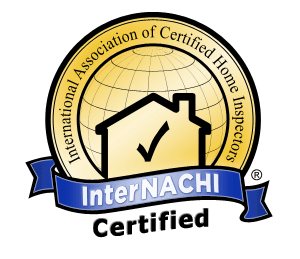Home Inspections of USA Commercial and Residential Home Inspections

"TEAM SHERLOCK"
Underground Fuel Tanks
Underground Fuel Tanks
II. HOME HEATING OIL TANKS
PROJECT MANAGEMENT
Many homes, especially in northern Michigan have relied on fuel oil as a source of heat during the winter months. Typically this fuel has been stored in aboveground tanks (AGTs), underground storage tanks (USTs) or in basement tanks. Storing fuel in underground tanks has become an environmental concern because the UST is more susceptible to corrosion. Since the UST cannot readily be inspected, slow leaks can go undetected for a long time causing significant environmental damage.
Because this damage can be costly to remediate, many lending institutions are unwilling to accept any liability associated with USTs. The lenders usually require that that the USTs be removed or that an environmental assessment, including analytical sampling, be performed before any loan is approved.
REMOVAL
The UST is usually located close to the house in a flower bed or landscaped area, is 300 or 500 gallons in size and buried 2' or less below ground. The tank can generally be excavated by hand and winched out of the pit via a pickup truck minimizing damage to the lawn or surrounding landscaping. The whole procedure including filling to grade with clean soil usually takes 1/2 to 3/4 of a day. There are several advantages to the removal method:
-
The UST can be thoroughly inspected for evidence of overfill, staining, or holes.
-
The entire excavation can be examined for evidence of a fuel oil release
- The seller's potential liability for continued future use of the UST will end if it has been removed.
In the situation where the home is not changing to natural gas or propane, the UST will have to be replaced. The best option is to replace it with a low profile skid-mounted AGT. The skid-mounted tank is more stable and less likely to tip over that the oval tank mounted on legs.
The cost of removal is roughly equivalent to the cost and installation of the new tank. Generally the seller pays for the UST removal since they have had the use of the tank and are responsible for any releases associated with it. The buyer usually pays for the new AGT and its installation since they will have the benefit of its use for years to come.
ENVIRONMENTAL ASSESSMENT
Some lending institutions will not require the removal of the UST and will grant loan approval based on the results of an environmental assessment. The assessment generally consists of advancing hand-augered borings to the base of the UST at two or three locations. The soil is evaluated for possible petroleum impact during the augering process. Samples are collected at the base of the UST and submitted to a laboratory for petroleum analysis. The advantage of the assessment method is that it costs less than the removal method. There are several disadvantages to the assessment method. They are:
-
The assessment is base on a prescribed number of borings and is not as thorough as the examination that can be performed during the removal process. Many USTs, especially in northern Michigan are placed in highly porous and permeable soils such as lose sand. Results of borings placed at each end of the UST may indicate that the tank has not leaked when it is actually leaking from a hole at the middle of the tank. When USTs are located in such soils at lakeside residences, they are close to the water table where an undetected release may require a costly and lengthy remediation.
-
Many of the USTs were installed when the home was originally built often twenty to thirty years ago. Experience indicates that the useful average leak-free life span of a home heating oil tank to be between 15 and 20 years. When the buyer accepts the UST, it may already be close to failure.
- Even with a site assessment, the seller may be considered liable by the buyer at a future date if a release is detected.
The best approach is to have the UST removed prior to listing or early in the listing process so that environmental concerns can be addressed before a buyer is found and a closing date is established. The asking price of the property can be adjusted to reflect the UST removal and new tank installation. The presence of the new AGT and clean UST closure can then be used as a positive selling point. There is a tendency however, to make the UST removal a bargaining chip in the contract process. If a release is detected immediately prior to closing, the deal may unnecessarily fall through because there is not sufficient time to remediate it. Many of the releases are small and can be efficiently remediated if sufficient time is available.
If a release from a home heating oil tank is documented, the homeowner may not be burdened with the entire cost to remediate. These costs may be covered by the homeowner's insurance policy if it does not contain an environmental exclusion clause. The liability section of the policy that deals with damage to a third party generally provides coverage. The State of Michigan is usually the threatened third party since groundwater is considered a state resource and not the property owner's. Similarly if there a threat to or the plume has moved to an adjoining property, a third party has been damaged. Significant Michigan case law exists on this issue.
DEQ- information site.
http://www.michigan.gov/deq/0,1607,7-135-3311_4115_4238-9379--,00.html

Home Inspections of USA
1752 NE Torch Lake Drive
Central Lake, MI 49622
1-800-730-6610
231-544-8016